What Does the Brand Puma Stand for
 PUMA Logo PNG
PUMA Logo PNG
Although the earliest PUMA logo was introduced in 1948, it was not very remarkable, so the company prefers to mention the 1957 emblem as its first one.
Meaning and history

The iconic Puma logo was first introduced in 1948 and featured almost the same leaping wild cat we all got used to seeing today. Though on the earliest Puma emblems the cat was leaping through the stylized letters "D", which stood for the name of the brand's founder, Rudolf Dassler.
1948 — 1968
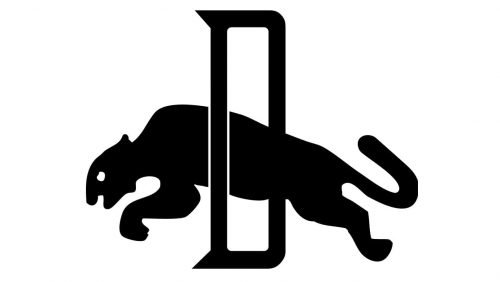
The very first logo for Puma was introduced in 1948 and boasted a monochrome image, where the black graceful wild cat was jumping froth a sharp and narrow letter "D", which also featured black colors but was outlined in white.
The brand also used a reverse color version of that badge, placing a white animal with the letter on a black hexagonal background.
1951 — 1968
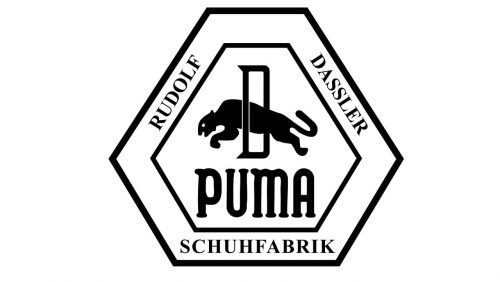
The redesign of 1951 brought more geometry and lettering to the original logo, enclosing it in a double hexagonal frame, where the "Rudolf Dassler Schufabrik" inscription was placed around the perimeter.
In the middle of the badge under the leaping cat image, the "Puma" wordmark was written in a bold black typeface with rounded lines.
1958 — 1968
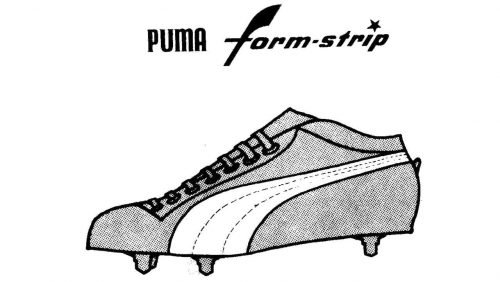
In 1958 the brand used its logotype along with the new emblem, which began to be placed on all the label's shoes — a smooth and elegant form-strip, a curved line, which got narrowed to the top.
1968 — 1970

The black cat came back to the brand's visual identity in 1968, and it was the only element of the logo, having its original contours refined and cleaned. It was a minimalist emblem, which only stayed with the company for two years, and later was a little modified.
1970 — 1974
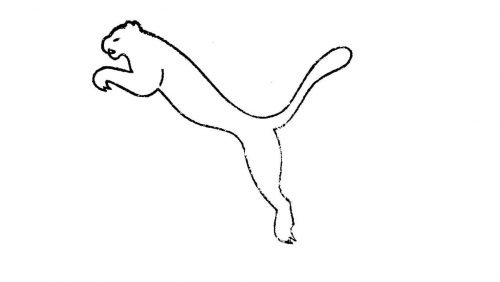
The puma started being placed vertically in 1970. Its main color was switched from black to white and the animal's silhouette gained a delicate black outline, which made it look even more graceful and elegant.
1974 — 1976
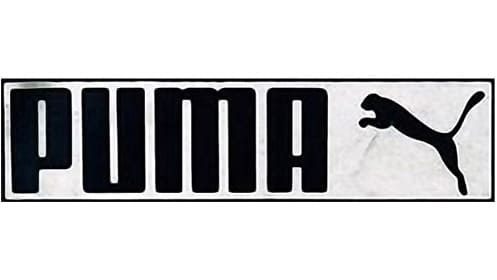
The leaping cat becomes black again and being placed in the right from the enlarged bold wordmark in a custom sans-serif typeface with rounded angles of the letters. The composition is placed on a light background and enclosed in a horizontally stretched rectangular frame.
Another color palette was in use by the brad during this period — wight yellow lettering and icon in green background, a fresh and bright combination, standing for growth, progress, and motivation.
1976 — 1978

The formstrip replaces the cat again in 1976, being placed under the italicized logotype in the lowercase, executed in thick lines of a modern yet pretty simple sans-serif typeface, with the vertical bar of the "P" elongated.
1978 — 1980
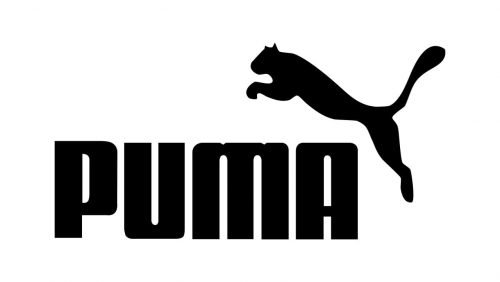
The letters of the logotype got capitalized again in 1978, and the leaping puma came back in the same year. It was actually an initial logo we all can see today. The cat in black was placed above the upper right dinner of the wordmark.
1980 — Today
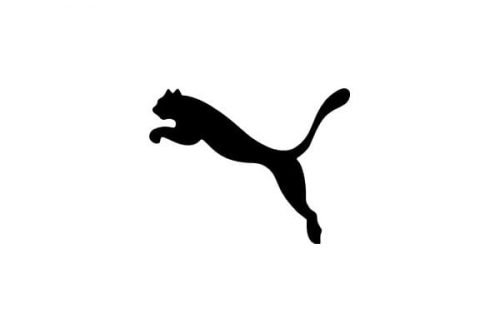
The brand also started using just the puma symbol with no additional in 1989, and this is the icon we can still see today, with perfectly cleaned and softened contours of the wild cat, which point of elegance, timelessness, and professional approach of the company.
1980 — 1988
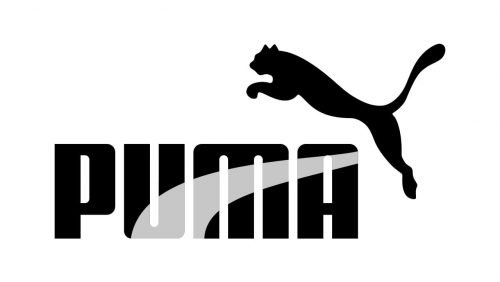
Another version, created in 1989, featured a combination of both iconic Puma symbols, a formstrip, and a leaping cat, adding a light gradient image to the logotype, and keeping the jumping animal in its place.
1988 — Today
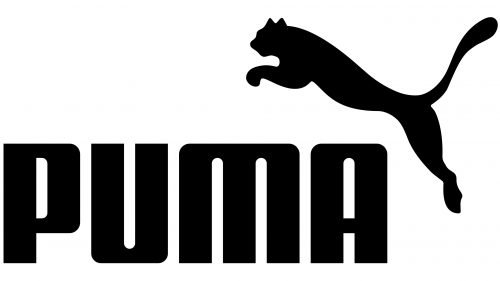
Today the brand still uses its logo, introduced in 1988, which is almost the copy of the 1980'a version, but with the lines of the letters straightened and softened. The smooth and chic typeface makes the whole image look sleek and exquisite, adding a sense of reliability and expertise to all the brand's qualities.
Font
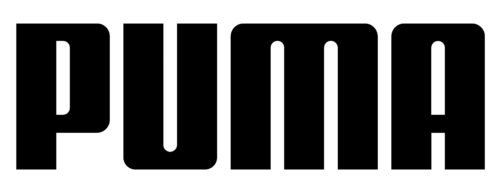
The typeface used in the current wordmark somewhat resembles the one that was created in 1957 by Rudolf Dassler. Again, round shapes dominate, and there are no sharp angles. However, the current typeface is more solid and the letters have been slightly altered.
Color
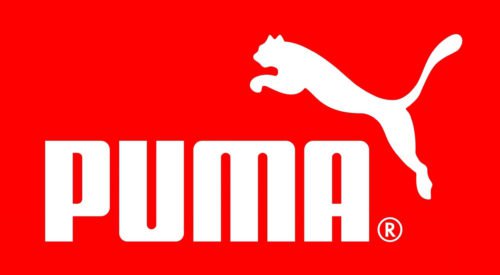
Typically the PUMA logo is given in black against the white background. However, in case the context requires another color choice, it is also possible.
What Does the Brand Puma Stand for
Source: https://1000logos.net/puma-logo/